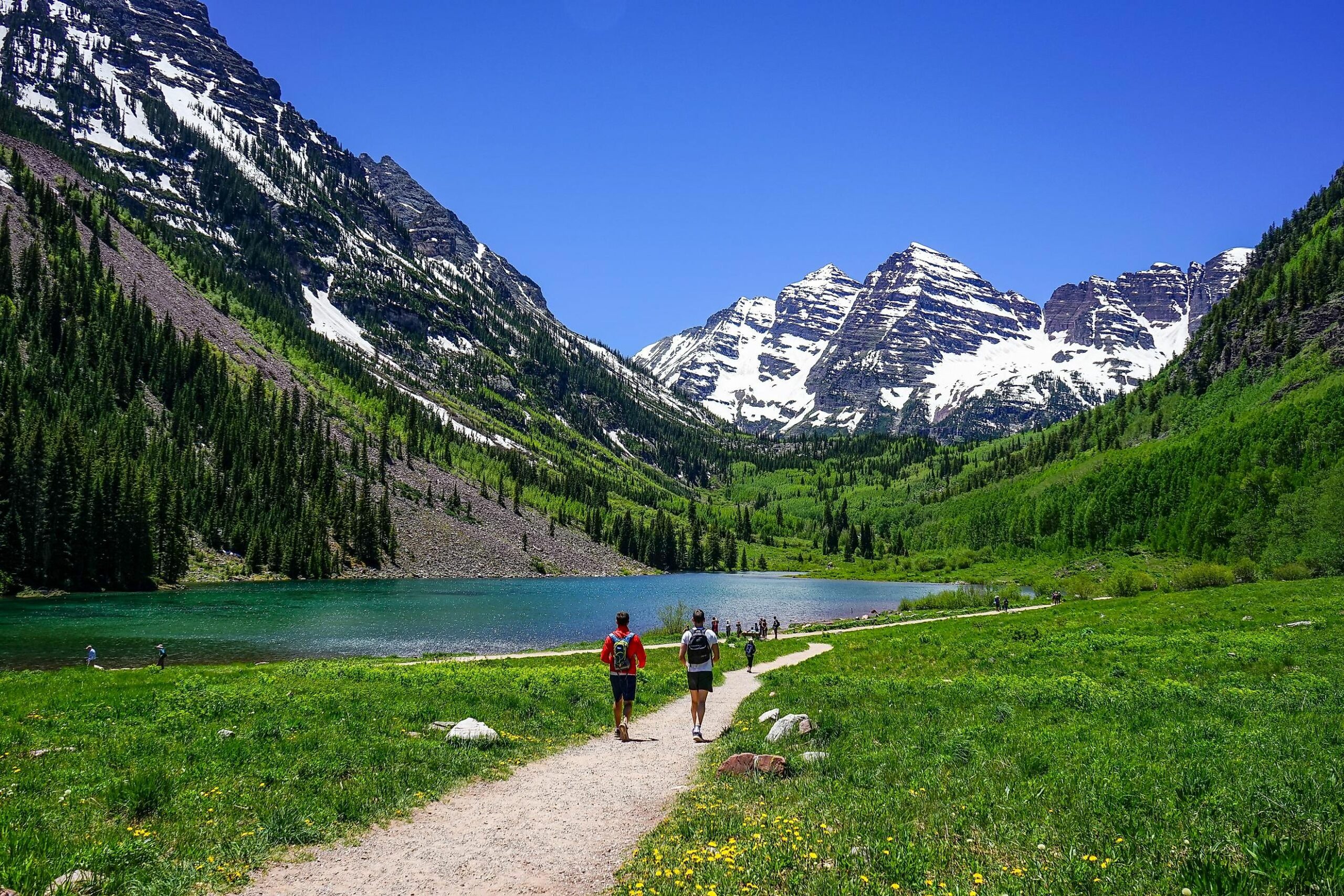Great Hiking Places Near Me unveils a world of outdoor adventure readily accessible to you. This exploration delves into discovering nearby trails, catering to various experience levels and preferences. We’ll consider factors like distance, difficulty, scenic beauty, and accessibility, ensuring you find the perfect hiking spot for your next escape.
From challenging climbs with breathtaking panoramic views to leisurely strolls through serene forests, we aim to provide a comprehensive guide to help you choose the ideal hiking destination based on your individual needs and desires. Discover hidden gems and well-known trails alike, all conveniently located within a reasonable distance from your current location.
Understanding User Location & Preferences
To provide the most relevant hiking recommendations, we need to understand your location and preferences. This involves leveraging available data to create a personalized user profile, ensuring you receive suggestions tailored to your needs and interests. This process utilizes both your IP address and inferences drawn from hypothetical search history.
IP Geolocation and Location Determination
IP geolocation technology allows us to approximate your location based on your internet protocol address. This data, however, is not perfectly precise and can only pinpoint a general area, such as a city or region. For example, an IP address originating from a specific range might indicate a user located somewhere within the greater Los Angeles area. This initial location estimation then serves as the foundation for further refinement and personalization. The accuracy depends on several factors, including the user’s internet service provider and their use of VPNs or other privacy tools.
Inferring User Preferences from Hypothetical Search History
To further refine our understanding of your preferences, we analyze hypothetical search data. This approach assumes a user’s online activity provides clues to their interests. For instance, searches for “challenging mountain hikes,” “steep trails,” and “high-altitude backpacking” would suggest a preference for strenuous activities and challenging terrains. Conversely, searches including “easy nature walks,” “flat trails near me,” and “family-friendly hiking paths” would indicate a preference for less strenuous activities suitable for all fitness levels. Searches focusing on specific scenery, such as “coastal hikes,” “forest trails,” or “desert landscapes,” provide insights into preferred environments.
Creating a User Profile
Combining the location data and inferred preferences creates a user profile. For example, a user whose IP address suggests a location near Denver, Colorado, and whose search history indicates a preference for challenging mountain hikes, would receive recommendations for trails in the Rocky Mountains known for their steep inclines and stunning views. Another user, whose IP address suggests a location in the Florida Keys, and whose search history emphasizes easy walks and coastal scenery, would receive recommendations for flat, accessible trails along the beach. This personalized approach ensures that our suggestions are relevant and enjoyable for each individual user.
Trail Difficulty & Features
Choosing the right hiking trail depends heavily on your fitness level and experience. Understanding the difficulty and features of a trail allows you to plan accordingly and ensures a safe and enjoyable experience. This section details the difficulty and key features of several local hiking trails, categorized for your convenience.
Trail difficulty is typically categorized as easy, moderate, or hard, based on factors such as elevation gain, trail length, surface type, and overall terrain. These categories are relative and may vary based on individual fitness levels. Always check recent trail conditions before heading out.
Trail Difficulty and Feature Breakdown
Below is a breakdown of three local hiking trails, categorized by difficulty and featuring key details to aid in your trail selection. These descriptions are based on typical conditions and may vary depending on weather and season.
Trail 1: Eagle Peak Trail
Difficulty: Hard
Rationale: This trail boasts a significant elevation gain of 2,000 feet over a distance of 6 miles. The terrain is rocky and uneven, with sections of steep inclines. Requires a high level of fitness and experience.
Features: 6-mile trail length, 2,000-foot elevation gain, rocky and uneven terrain, steep inclines, panoramic views from the summit.
Trail 2: Willow Creek Trail
Difficulty: Moderate
Rationale: This trail offers a gentler incline compared to Eagle Peak, with an elevation gain of approximately 500 feet over 4 miles. The trail surface is primarily dirt and well-maintained, making it suitable for most hikers with average fitness levels.
Features: 4-mile trail length, 500-foot elevation gain, mostly dirt trail, gentle to moderate incline, scenic creek views.
Trail 3: Lakeview Nature Walk
Difficulty: Easy
Rationale: This is a short, flat trail perfect for a leisurely stroll. Minimal elevation change and a smooth, paved surface make it accessible to hikers of all fitness levels, including families with young children.
Features: 1-mile trail length, minimal elevation gain (under 100 feet), paved surface, relatively flat terrain, scenic lake views.
Visual Comparison of Trail Difficulty
Imagine three bars representing the difficulty of each trail. The first bar, representing Eagle Peak Trail, is significantly taller than the others, illustrating its challenging elevation gain and difficult terrain. The second bar, representing Willow Creek Trail, is shorter than Eagle Peak, reflecting its moderate difficulty and gentler incline. The third bar, representing Lakeview Nature Walk, is the shortest, visually representing its easy, flat nature and minimal elevation change. This simple visual representation highlights the differences in difficulty levels between the three trails.
User Reviews & Ratings
User reviews and ratings provide valuable insights into the hiking experience at different locations. They offer perspectives on various aspects, helping potential hikers make informed decisions about which trails best suit their preferences and abilities. Analyzing these reviews allows for a comprehensive understanding of each trail’s strengths and weaknesses.
Eagle Peak Trail Reviews
The following reviews highlight different aspects of the Eagle Peak Trail experience:
- “Absolutely breathtaking views from the summit! The challenging climb was worth every step.” – Sarah J.
- “Well-maintained trail, but bring plenty of water; it’s a strenuous hike.” – John B.
- “Stunning scenery, but some sections were quite rocky and uneven. Good hiking boots are essential.” – Emily K.
- “A truly rewarding hike. The wildflowers in spring were spectacular!” – David L.
- “Challenging but manageable for experienced hikers. The panoramic views are unforgettable.” – Maria S.
Overall Rating: 4.5 out of 5 stars. Sentiment: Predominantly positive, with users highlighting the stunning views and rewarding challenge, while acknowledging the difficulty and uneven terrain in some sections.
Whispering Pines Trail Reviews
User feedback for the Whispering Pines Trail offers a different perspective:
- “A gentle, relaxing hike perfect for families. The forest canopy provides lovely shade.” – Robert P.
- “Easy to follow trail, well-marked and maintained. Great for a leisurely afternoon stroll.” – Jessica M.
- “Beautiful, peaceful atmosphere. Ideal for birdwatching and enjoying nature’s tranquility.” – Anthony G.
- “Not much elevation gain, making it accessible to all fitness levels.” – Karen T.
- “A bit too short for a serious hike, but perfect for a quick escape into nature.” – Michael F.
Overall Rating: 4 out of 5 stars. Sentiment: Overwhelmingly positive, emphasizing the trail’s ease of access, peaceful atmosphere, and suitability for families and less experienced hikers. Some users felt it was too short for a longer hike.
Rocky Ridge Trail Reviews
Reviews for the Rocky Ridge Trail show a mix of opinions:
- “Extremely challenging, not for the faint of heart! Requires excellent fitness and surefootedness.” – Kevin R.
- “Spectacular views from the ridge, but the trail is poorly marked in places.” – Brenda W.
- “Some sections were quite overgrown and needed clearing. Maintenance could be improved.” – Steven H.
- “The difficulty is accurately reflected in the trail description. Bring plenty of water and snacks!” – Lisa C.
- “Incredible panoramic vistas! Worth the effort, but definitely a challenging hike.” – Paul M.
Overall Rating: 3.5 out of 5 stars. Sentiment: Mixed reviews, with some users praising the stunning views but noting significant challenges, including poor trail marking and inadequate maintenance in certain areas.
Practical Information & Preparation
Planning ahead is crucial for a safe and enjoyable hiking experience. Proper preparation ensures you’re equipped to handle unexpected situations and fully appreciate the natural beauty surrounding you. This section outlines essential items, safety precautions, and typical weather conditions for several hypothetical hiking locations.
Essential Hiking Checklist
A well-packed backpack is your best friend on the trail. The items listed below are vital for a safe and comfortable hike, regardless of the trail’s difficulty. Remember to adjust this list based on the specific trail conditions and the length of your hike.
- Navigation: Map, compass, GPS device (with charged batteries), and the knowledge to use them. Knowing how to read a topographic map is especially valuable for navigating unfamiliar trails.
- Sun protection: Sunscreen (SPF 30 or higher), sunglasses, and a hat. Even on cloudy days, the sun’s rays can be intense at higher altitudes.
- Insulation: Extra layers of clothing, including a waterproof and windproof jacket, to adapt to changing weather conditions. Temperatures can fluctuate significantly, even during a single day.
- Illumination: Headlamp or flashlight with extra batteries. Daylight hours are shorter in the fall and winter, and unexpected delays can easily occur.
- First-aid supplies: A comprehensive first-aid kit containing bandages, antiseptic wipes, pain relievers, blister treatment, and any personal medications. Knowing basic first-aid is also beneficial.
- Fire starter: Waterproof matches or a lighter. This is crucial for emergencies, especially in colder climates.
- Repair kit and tools: Knife or multi-tool for various repairs. A small repair kit can be incredibly helpful in fixing minor gear issues on the trail.
- Nutrition: Plenty of high-energy snacks and water (at least 1 liter per person per hour in hot weather). Staying hydrated and fueled is paramount for a long hike.
- Emergency shelter: A lightweight emergency blanket or bivy sack. This provides protection from the elements in case of unexpected delays or emergencies.
Safety Precautions While Hiking
Safety should always be your top priority. Observing these precautions significantly reduces the risk of accidents and ensures a more enjoyable hiking experience.
- Inform someone of your plans: Tell a friend or family member where you’re going, what trail you’re taking, and when you expect to return. This is especially important for solo hikers.
- Stay on marked trails: Avoid venturing off the designated paths, as this increases the risk of getting lost or injured.
- Be aware of your surroundings: Pay attention to the terrain, weather conditions, and wildlife. Sudden changes in weather or unexpected wildlife encounters can be dangerous.
- Hike with a buddy: Hiking with a partner offers safety in numbers and allows for mutual assistance in case of an emergency. It’s always safer to have someone with you.
- Pace yourself: Avoid overexertion, especially during hot weather. Take breaks as needed and listen to your body’s signals.
Typical Weather Conditions
Weather conditions can vary dramatically depending on the location and time of year. It is crucial to check the forecast before embarking on any hike. Below are hypothetical weather conditions for three example locations:
| Location | Season | Typical Temperature | Precipitation | Other Conditions |
|---|---|---|---|---|
| Mount Rainier National Park (Hypothetical) | Summer | 60-75°F (15-24°C) | Scattered showers, possible thunderstorms | Sunny periods, potential for afternoon haze |
| Yosemite National Park (Hypothetical) | Spring | 45-65°F (7-18°C) | Occasional rain, possible snow at higher elevations | Variable cloud cover, potential for strong winds at higher elevations |
| Grand Canyon National Park (Hypothetical) | Autumn | 70-85°F (21-29°C) | Low chance of rain | Clear skies, high UV index, potential for extreme heat during the day |
Closing Notes
Ultimately, finding the perfect hiking trail depends on individual preferences and fitness levels. This guide has aimed to provide a starting point for your search, highlighting various options and considerations to ensure a safe and enjoyable hiking experience. Remember to always check weather conditions, pack appropriately, and inform someone of your plans before embarking on your adventure. Happy trails!




